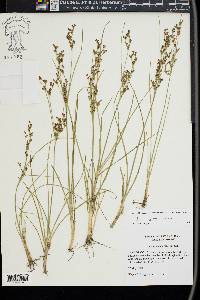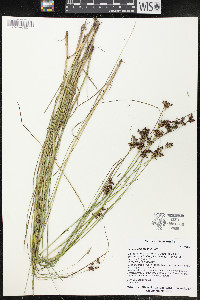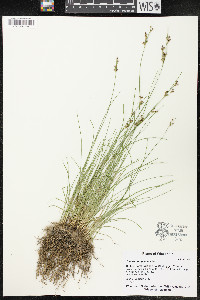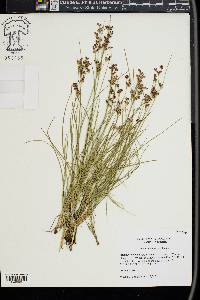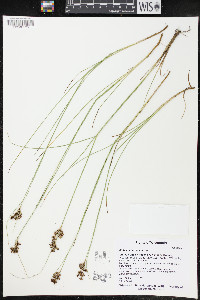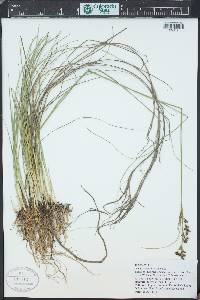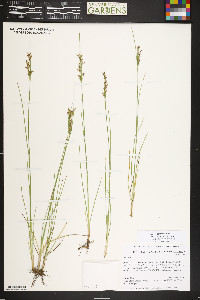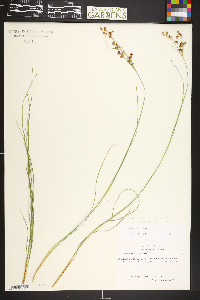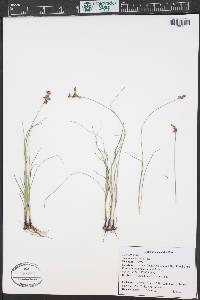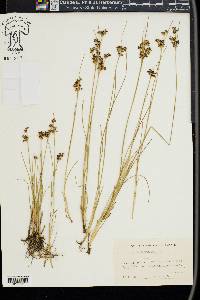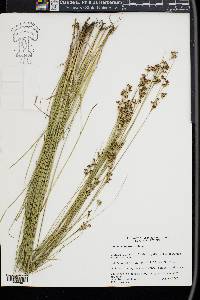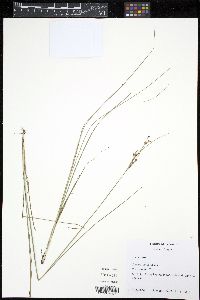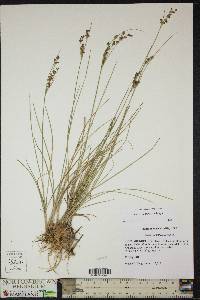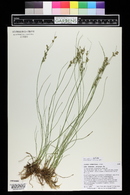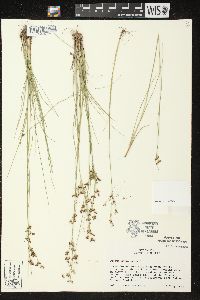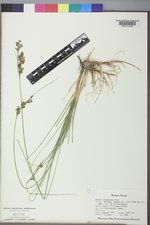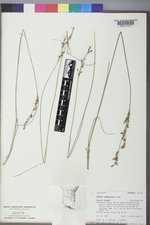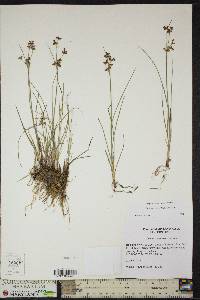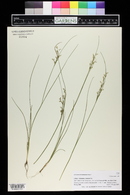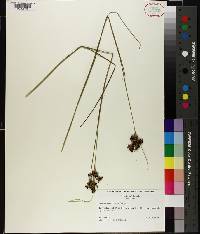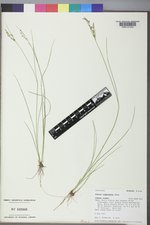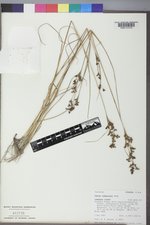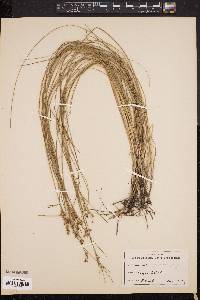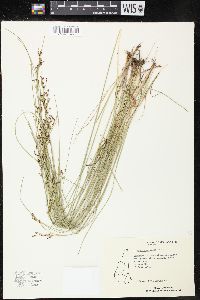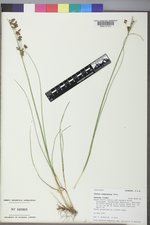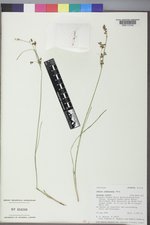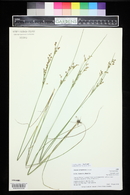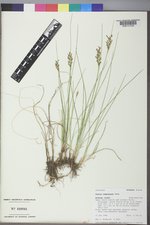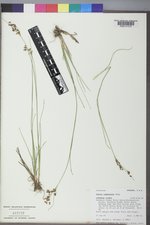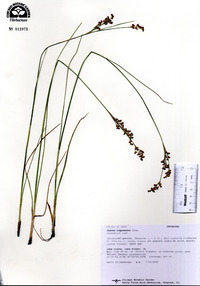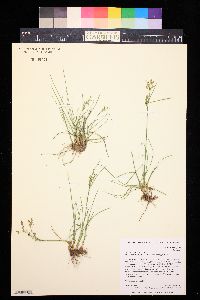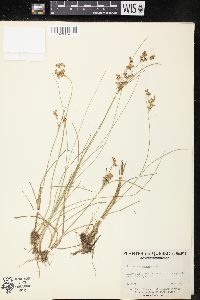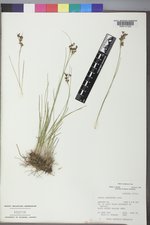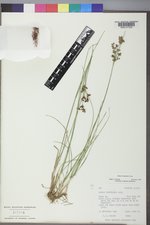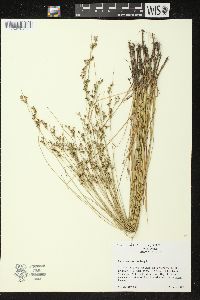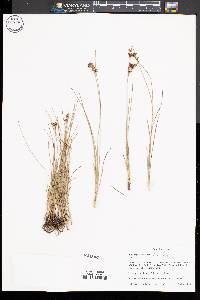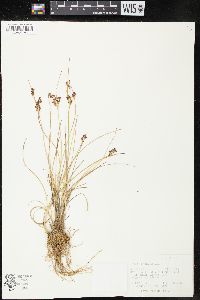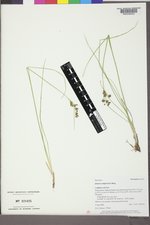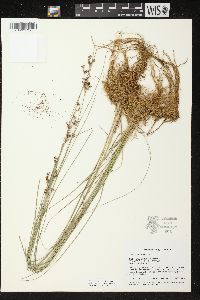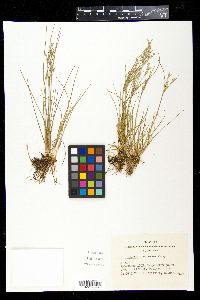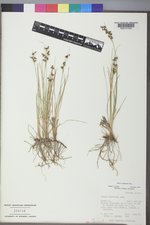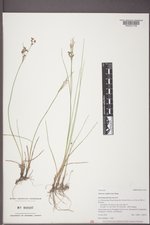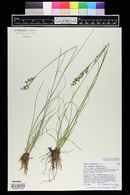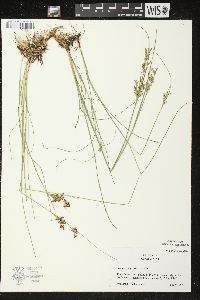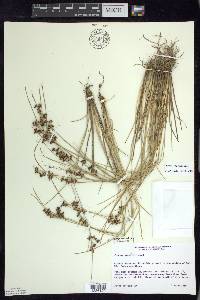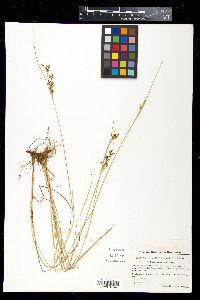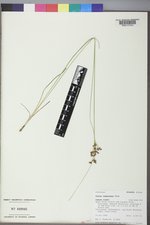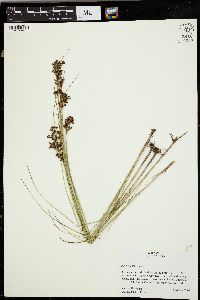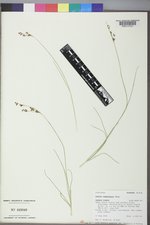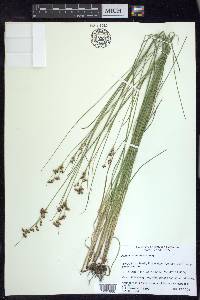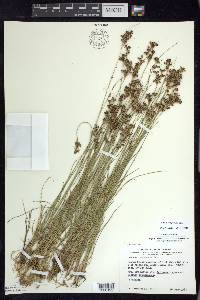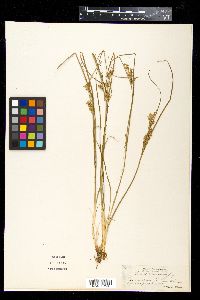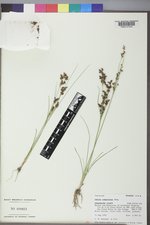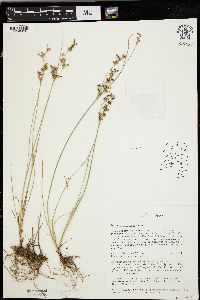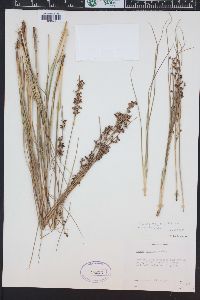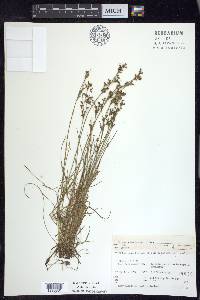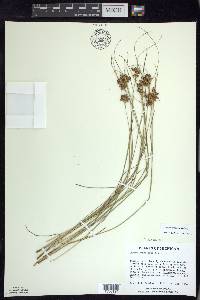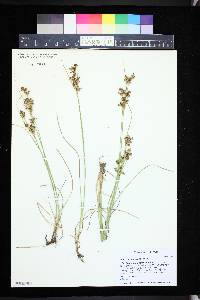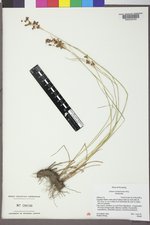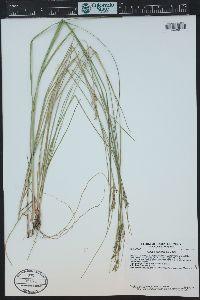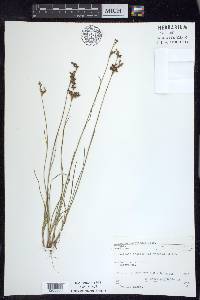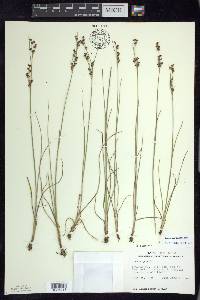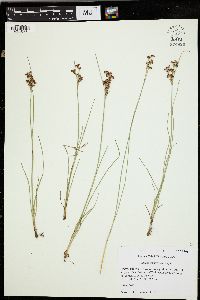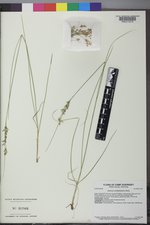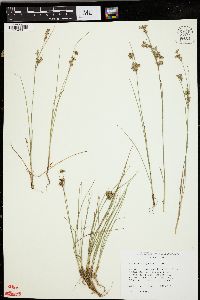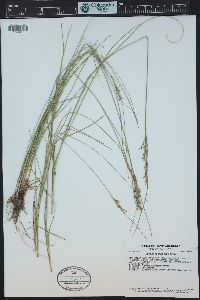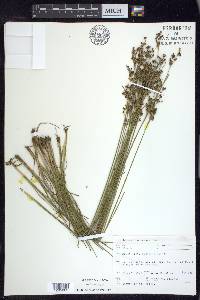Juncus compressus
|
|
|
|
Family: Juncaceae
Round-Fruit Rush
|
Herbs, perennial, to 8 dm. Rhizomes short- creeping or densely branching, if densely branching herb appearing cespitose. Cataphylls 1--3. Leaves basal and cauline, 1--2; auricles 0.3--0.5 mm, scarious to membranous; blade flat to slightly channeled, 5--35 cm x 0.8--2 mm, margins entire. Inflorescences 5--60-flowered, lax, loose to moderately congested, 1.5--8 cm; primary bract usually exceeding inflorescence. Flowers: bracteoles 2; tepals brownish, ovate to oblong, 1.7--2.7 mm; inner and outer series nearly equal, apex obtuse; stamens 6, filaments 0.5--0.7 mm, anthers 0.6--1 mm; style 0.3 mm. Capsules brown or darker, pseudo-3-locular, widely ellipsoid to obovoid, 2.5--3.5 x 1.4--1.8 mm, exceeding tepals. Seeds light brown, ellipsoid to lunate, 0.35--0.556 mm, not tailed. 2n = 44. Flowering and fruiting late spring--early summer. Disturbed ground, especially ditches, along railroads and banks of canals and roadsides; frequently in saline or alkaline soils; 1500--2100 m; introduced; Man., Nfld. and Labr. (Nfld.), N.S., Ont., Que.; Colo., Maine, Md., Mich., Minn., Mont., Nebr., N.Y., N.Dak., Utah, Wis., Wyo.; Europe; w Asia. Perennial grasslike forb up to 0.8 m tall Leaves: one or two basal and one or two alternate on stem, 5 - 35 cm long, 0.8 - 2 mm wide, linear, grasslike, fairly flattened in cross section, and lacking crosswise partitions inside (non-septate). The leaves also have a short (0.3 - 0.5 mm), thin and papery, or membranous, basal, ear-like appendage (auricle) at the top of the leaf sheath. Inflorescence: a terminal, somewhat loose to more congested, 1.5 - 8 cm long, multi-branched structure with five to sixty, single, radially symmetric, small flowers at the ends of branches. The entire branched inflorescence is subtended by a large (usually longer than full inflorescence) bract, and the individual flowers have two small bracts (bracteoles) positioned directly below the tepals. Stamens: six, with 0.5 - 0.7 mm long filaments, and the anthers up to two times longer (0.6 - 1 mm). Pistil: with one superior ovary, a 0.3 mm long style, and three stigmas. Fruit: appearing three-chambered, brown or darker toward black, 2.5 - 3.5 mm tall (longer than tepals), 1.4 - 1.8 mm wide, widely ellipsoid to inversely egg-shaped capsules. Stems: sometimes tufted, erect, smooth, round in cross section, and arising from densely branched or short-creeping rhizomes. Seeds: many, light brown, 0.35 - 0.556 mm long, ellipsoid to crescent-shaped with short-pointed or abruptly narrowed tips, but without distinct narrowed tails at the ends. Tepals: six in two whorls of three, brownish with greenish midvein, 1.7 - 2.7 mm long (all about same length), egg-shaped to oblong with membranous edges and blunt tips. Similar species: Juncus compressus differs from most other members of the subgenus Poiophylli because it has rounded or blunt-tipped tepals. It is most likely to be confused with a species that has not been reported from the Chicago Region, J. gerardii, which differs by having much longer anthers (at least 1 mm and typically more than twice as long as the filaments), and the basal bract never extends beyond the inflorescence. Flowering: May to early July Habitat and ecology: Occasional, in disturbed sites such as along roads, in ditches, and especially along expressways. Occurence in the Chicago region: non-native Author: The Field Museum Much like no. 1 [Juncus gerardii Loisel]; primary invol bract usually surpassing the infl; tep oblong to obovate, obtuse, light brown with greenish midstrip and membranous margin, the sep 2-2.5 mm; stamens 6, extending to about the middle of the tep or a bit beyond, the anthers up to ca 1 mm, 1-2 times as long as the filaments; fr obovoid-globose, 2.1-2.6 mm, short-beaked, obviously surpassing the sep; 2n=40, 44. Wet meadows and salt-marshes; native to Europe, now irregularly established from Nf. to Me. and N.H., w. to Wis., Minn., Mont., and Utah. Gleason, Henry A. & Cronquist, Arthur J. 1991. Manual of vascular plants of northeastern United States and adjacent Canada. lxxv + 910 pp. ©The New York Botanical Garden. All rights reserved. Used by permission. From Flora of Indiana (1940) by Charles C. Deam Indiana Coefficient of Conservatism: C = null, non-native Wetland Indicator Status: OBL |

